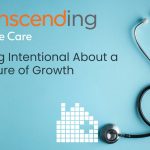Unlocking Growth in Home-Based Care: Key Insights from Transcend’s GRO™ Assessment
It’s been a busy year at Transcend! Over the last 12 months, we saw unprecedented demand for our new GRO™ Assessment offering, performing our proprietary analysis to support providers from San Diego, to Iowa, to Michigan and beyond. We dug deep into the data of home care providers, hospices and palliative care providers. We reviewed rural programs serving under a hundred patients and multi-state providers serving thousands.
The benefit to the codified analysis is that it gave us the (admittedly nerdy) ability to start to trend our findings and outcomes. When we’re analyzing a program, we’re applying our decades of experience against a predefined set of benchmarks. And it’s become clear that while every agency is unique, there are common themes for all providers looking to optimize their growth functions in home-based care.
Here are our top five takeaways from performing the GRO Assessment for our clients and colleagues:
1. The Differentiation Dilemma: Standing Out in a Crowded Market
One of the most striking findings from these engagements is that meaningful differentiation is almost always the lowest-scoring area for home-based care providers. Many organizations struggle to clearly define and communicate what sets them apart. While most providers offer high-quality care, they frequently lack a compelling value proposition that resonates with referral sources, patients and families.
They may know internally that they’re unique, but where we often see them stumble is in the hard-wiring of their differentiators into their outward-facing presence.
With almost 6,000 hospices, 11,000 home health agencies, and tens of thousands home care providers in the United States, crafting a unique market position and building a differentiated brand is no longer optional – it’s essential. Without a strong and clear value proposition, providers risk blending into a sea of sameness, making it difficult to attract and retain patients, referral partners and top talent.
2. The Data Imperative: Beyond Basic KPIs
Another consistent finding from the GRO Assessment is the industry-wide need for stronger and more nimble data infrastructure. Gone are the days when one or two key performance indicators (KPIs) were enough to sustain and grow a home-based care organization. Today, leaders need real-time insights powered by business intelligence (BI) tools to make informed decisions and drive sustainable growth.
Our time with providers revealed that many still operate with outdated (aka Excel-pivot-table-based) reports or lack the necessary processes and protocols to ensure accurate data collection. Investing in modern data infrastructure and the corresponding tools, workflows and staff training is no longer a luxury but a requirement. Organizations that embrace data-driven decision-making are more nimble, especially when it comes to growing census and length of stay.
3. The Marketing and Sales Conundrum: Measuring What Matters
Transcend firmly believes that growth in home-based care requires a combination of marketing and business-to-business (B2B) sales infrastructure. Some organizations recognize this and invest in both areas, yet very few track outcomes for either. This lack of measurement makes it difficult to determine what’s working and where to allocate resources for the greatest impact.
A well-balanced growth strategy requires alignment between marketing initiatives (such as digital advertising) and B2B sales efforts (such as referral partner engagement, physician outreach and account-based sales strategies). The key is not just to invest in these areas but to implement clear tracking mechanisms that measure their performance and return on investment (easier said than done, to be sure).
4. The Power of an Outside Perspective
One of the most valuable aspects of the GRO Assessment is its ability to validate leadership hunches and provide nuanced external affirmation. While our assessments rarely indicated a need for a complete organizational overhaul, our experience in running home-based care organizations gives a fresh and ordered set of action items. Many leaders already have a sense of their challenges, but having a structured, data-driven assessment from a third party helps remove uncertainty and accelerate prioritized decision-making.
5. The Value of Long-Term Engagement
Beyond the immediate insights provided by the GRO Assessment, longer-term engagements have proven instrumental in saving organizations both time and money. In 2024, Transcend began every long-term engagement with a GRO, digging deeply into data, personnel and market trends to get a 360-view of our clients’ current state.
By understanding an organization’s unique needs, Transcend has been able to help ensure that strategic initiatives are addressing the right problems first. For example, instead of jumping straight into a rebrand, an assessment might reveal that the real priority is census stabilization through a targeted consumer campaign. Similarly, rather than investing in broad marketing support for a palliative care program, a provider may need to focus on strengthening sales infrastructure to build hospice referrals.
Solving the right problems in the right order matters, and our most successful engagements (with the highest ROI) kick off with the deep understanding that the GRO affords.
Moving Forward
If your organization is looking for clarity, strategic direction and a roadmap for growth, the GRO Assessment can help. By identifying key priorities and the right next steps, your agency can move forward with confidence and grow into a stronger, more sustainable future. Interested in learning more about the GRO process? Reach out to us at [email protected] to start a conversation.










